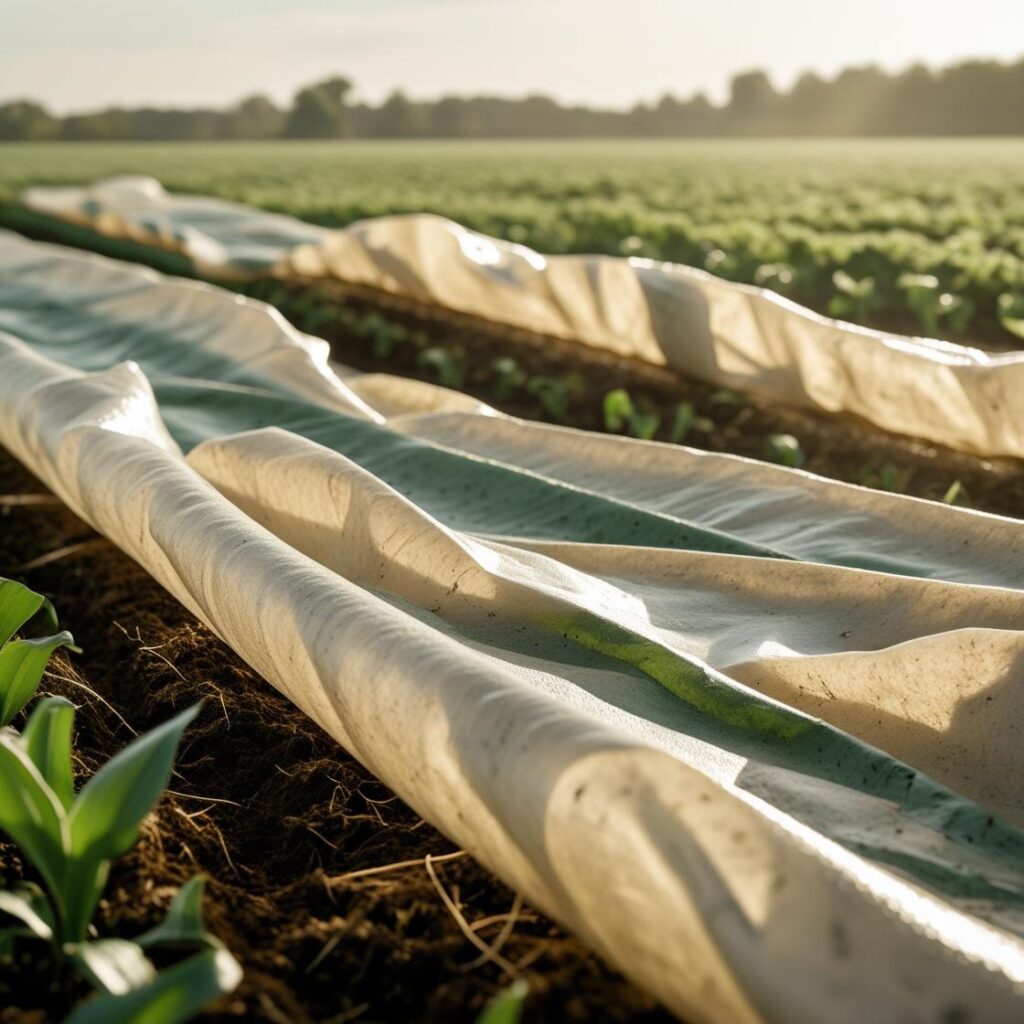
The challenges facing agriculture today
Bioplastics in agriculture are transforming the farming industry by offering sustainable, circular solutions. Agriculture plays a vital role in the global economy, but it also faces significant challenges. It accounts for a large share of global greenhouse gas emissions and consumes a large portion of the world’s freshwater resources. Plastics are widely used in agriculture for packaging and irrigation, but most of this plastic ends up in landfills or pollutes the environment. Plastic pollution is now a major issue, with microplastics found in soils, water, and even food. These traditional “take, make, dispose” farming practices have caused environmental harm and waste, and they are no longer sustainable.
Each year billions of tonnes of plastic are used in agricultural production globally. This creates waste, accelerates the depletion of essential resources, and damages the environment.
The circular economy: a new approach for agriculture
The circular economy presents a solution to these problems. It emphasizes reusing, recycling, and regenerating resources rather than discarding them. Circular agriculture goes beyond waste reduction.
Resources are recycled and reused in closed-loop systems, reducing dependency on new materials and lowering costs. This shift can improve soil health, reduce waste, maximize the use of natural resources, and create new revenue streams for farmers. By rethinking how resources are used, agriculture can become more sustainable and economically viable (Krishi Jagran, 2024).
The role of bioplastics in agriculture and the circular economy
Bioplastics, as sustainable alternatives to conventional plastics, are key to this transformation of agriculture. Unlike traditional plastics, which take hundreds of years to break down, bioplastics biodegrade quickly, helping to reduce long-term pollution.
Bioplastics offer several applications that support a circular system. Biodegradable mulch films, for example, help control weeds and retain moisture in soil. These films improve crop yields by 39% and boost nitrogen use efficiency by 300% when used with organic fertilizers (Samphire, Chadwick, & Jones, 2023).
Another notable application is bioplastic greenhouse films, which offer the same benefits as conventional plastic but degrade naturally after use, eliminating disposal costs (Schrader et al, 2015). Biodegradable plant pots and seedling trays help reduce waste in nurseries and greenhouses. Furthermore, bioplastic coatings for fertilizers release nutrients more efficiently, reducing nutrient runoff and pollution.
Environmental benefits of bioplastics in agriculture: reducing carbon footprints and improving soil health
The environmental benefits of bioplastics in agriculture are significant. The production of PLA (polylactic acid), one of the most commonly used bioplastics, emits 25% fewer greenhouse gases than traditional plastic production. Starch-based bioplastics can reduce emissions by up to 80%, making these materials an environmentally-friendly alternative (UKHI, 2025).
Additionally, bioplastics can be carbon neutral, as the plants used to make them absorb CO2 during their growth. This makes bioplastics an excellent choice for farming practices aiming to reduce carbon footprints and fight climate change.
Beyond waste reduction, bioplastics help enhance soil health. Unlike conventional plastics, which contaminate soil with microplastics, biodegradable bioplastics break down and enrich the soil with valuable nutrients. Research shows that films made from vegetable waste can improve biodegradability and add nutrients to the soil, fostering healthier crops.
The growing future of bioplastics in agriculture
The market for bioplastics in agriculture is rapidly growing. By 2025, the bioplastics for agribusiness market is expected to be worth $3.31 billion, with projections to nearly double by 2030 (Bioplastics for Agribusiness Market, 2025).
This growth is driven by the rising demand for sustainable farming practices, increased regulatory pressure, and the need for cost-effective solutions to environmental challenges.
As the EU’s circular economy initiatives aim to reduce fossil-based plastic production by 20% and cut microplastic releases by 30% by 2030, agriculture has a unique opportunity to lead the way in sustainable practices and circular solutions (European Bioplastics, 2024).
MoeBIOS: pioneering the future of agricultural bioplastics
The MoeBIOS project is leading the way in advancing bioplastics in agriculture. MoeBIOS focuses on developing new recycling processes for bioplastics used in agriculture, packaging, and textiles. The project works on creating efficient and sustainable solutions for recycling PLA, PHA, PBS, and PEF bioplastics, materials that currently have limited recycling infrastructure.
Through MoeBIOS, agricultural bioplastic waste will be collected, sorted, and recycled into new, high-quality products. This closed-loop system will help create a more sustainable agricultural sector by reducing the environmental impact of plastic waste and making farming more eco-friendly.
Conclusion: embrace bioplastics for a sustainable agricultural future
The shift to a circular economy in agriculture is not only an environmental imperative—it’s a smart, strategic move. By adopting bioplastics, farmers can reduce plastic waste, cut operational costs, and enhance soil health, all while aligning with global sustainability goals. These innovations are already here, ready to deliver practical value to the agricultural sector.
Thanks to EU-funded initiatives like MoeBIOS, agriculture doesn’t need to wait for the future to act sustainably—the tools are available now. It’s not a question of when to start embracing bioplastics. The time is now.
Learn more
To follow MoeBIOS’s journey toward sustainable bioplastics recycling:
- Visit our project website
- Follow us on LinkedIn and X (formerly Twitter)
Stay informed, stay engaged—and help us redesign the future of sustainable packaging.

